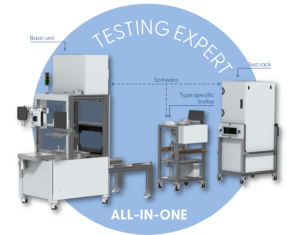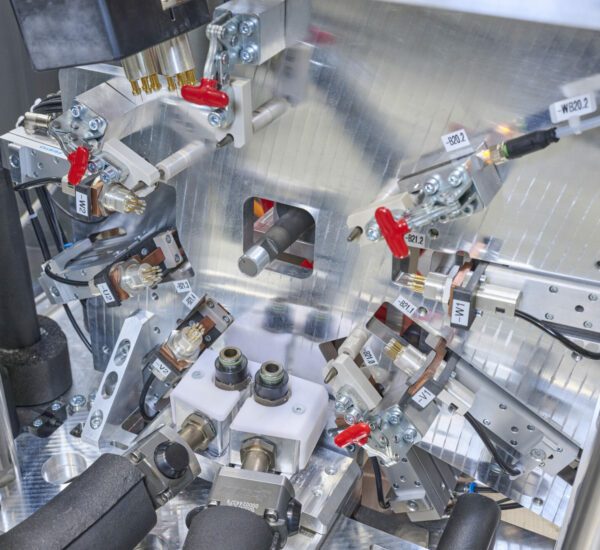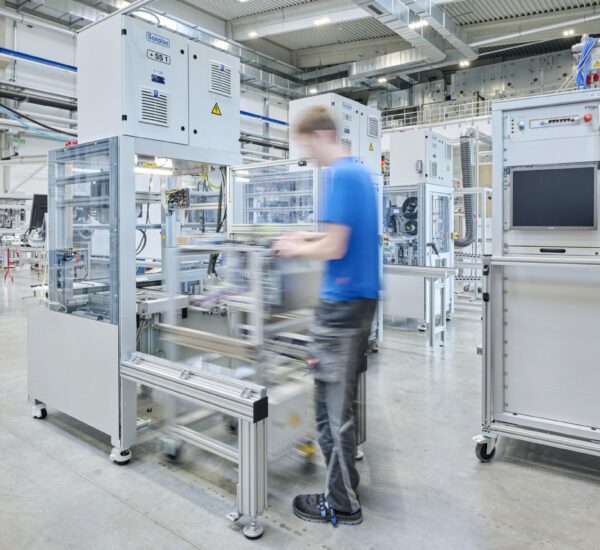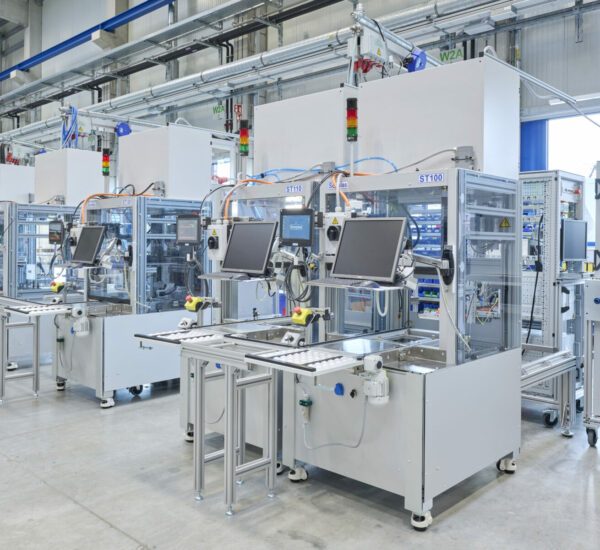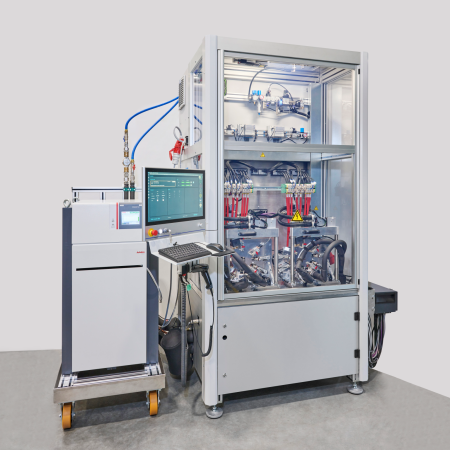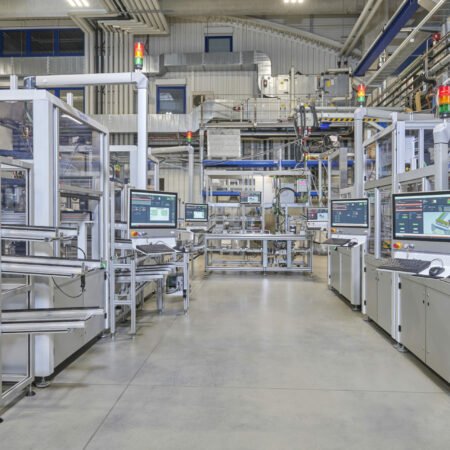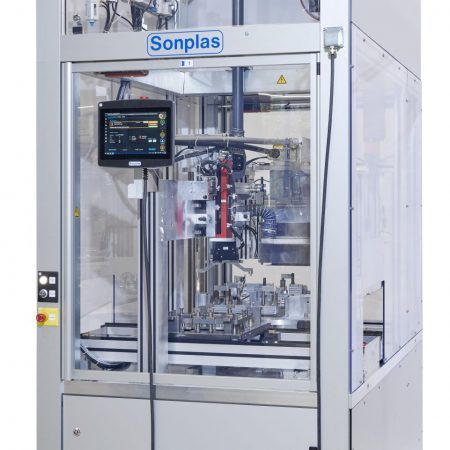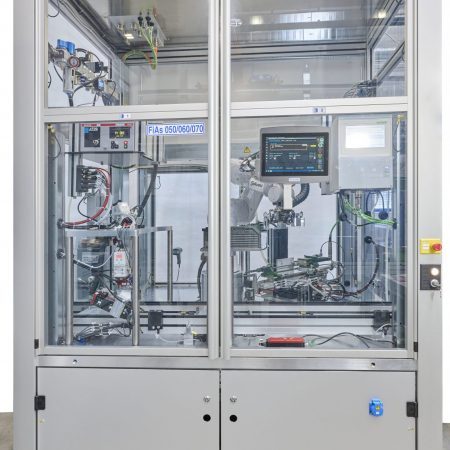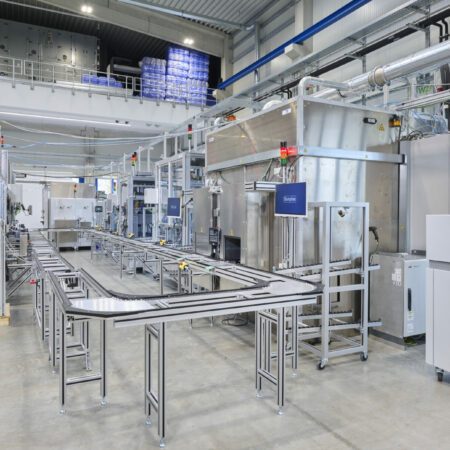Power electronics are one of the keys to successful energy transition in the automotive industry. In electric and hybrid vehicles, this technology is continually improving. To remain competitive at this high level, manufacturers need systems capable of not only assembling individual components (inverters, chargers and DC/DC converters) but also testing them.
That’s where Sonplas comes in. We use our extensive know-how and experience to advise our customers and develop the systems they need.
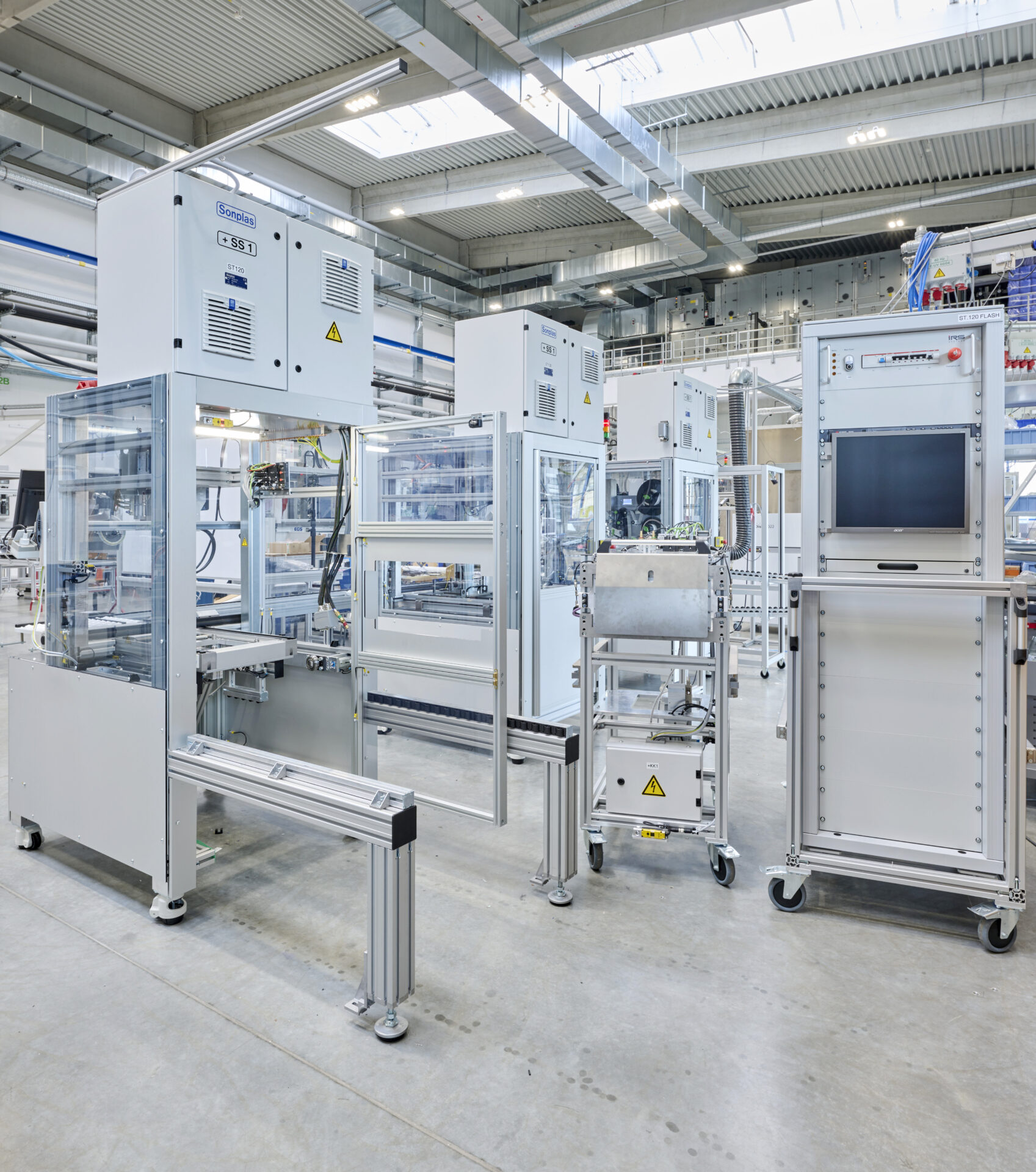
How you benefit
We are a single-source supplier for assembly and testing. And these two aspects are efficiently combined in our solutions. With a proven network of carefully selected and reliable partners, you get a complete package from a single source. This shortens distances, reduces your organisational labour and prevents interfacing problems.
The modular design of our test systems for EOL (end-of-line) applications enables us to flexibly adapt them to your individual requirements. We do this by selecting and combining specific modules.
Based on the project requirements, we choose solutions from our wide assortment of proven systems. Or else we work with you to jointly develop processes as a custom-designed solution. That lets you significantly lower your production costs.
As a special-purpose machine manufacturer, we supply assembly and testing systems for power electronics and work closely with you, our customers. For inverters, converters and on-board chargers, we plan and implement line concepts from prototype construction to high-capacity systems with cycle times between 20 and 300 seconds. They can be used to manufacture typical workpieces weighing from 2 to 25 kilograms.
We provide both the expertise and the necessary equipment to cover all your testing needs. We’ve accumulated extensive know-how and have a number of very successful references to show for it. As your partner, we provide a tremendous degree of security in the often risky and uncertain development stages of a project.
Testing power electronics – here are the tests we offer
Test 1: Our systems can use air to test the power electronics for leak-tightness.
Test 2: The machines perform what’s known as “flashing” to store calibration data.
Test 3: Communication can be tested via CAN bus or Ethernet.
Test 4: They can measure and calculate current, power or efficiency as well as indirectly detect rotational speed.
Test 5: We provide reliable solutions for safe-launch tests. So you can analyse and evaluate potential risks such as technical challenges, quality issues or legal aspects.
Test 6: Our systems provide cold and hot testing of PCBs or entire assemblies. They can run tests between -40 and +90 degrees Celsius. They are also equipped to simulate various ambient conditions. For even more intensive product testing, they can also be used to perform long-term tests ahead of scheduled series production.
Everything related to testing
To help you test and inspect your power electronics, we offer fitting solutions, including test adapters, systems and software:
- The test adapter can be individually configured for the plug and connector of the test item. The contacting is performed automatically. EOL (end-of-line) applications can involve voltages of up to 1500 V and currents of up to 1500 amps (in puls test applications). Optionally, we can provide active, dynamic cooling or heating, a temperature chamber as well as an interface with various plug connections..
- The basic hardware consists of a 19-inch rack, a CAN interface and a plug connection between the adapter and the test system. We also offer various power supplies as well as active or passive loads, power meters and switching matrices for highly flexible applications.
- We create the test software with test bench and framework. To integrate them into the testing environment, we also offer suitable device drivers. So what you get is a flexible interface and a test bench hub. In it, we adapt your user interface and connect your database to our own or to a different database. We also assist you with pre-series development, test the software, develop new test sequences and optimise existing ones.
Contact us!
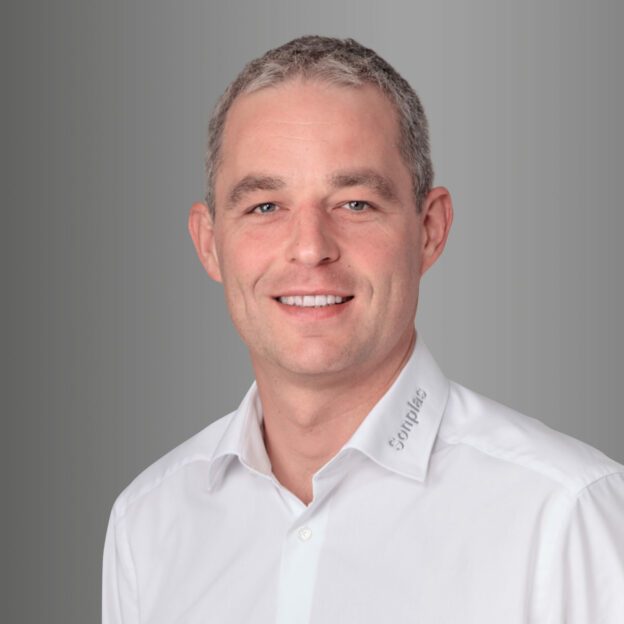
Dipl.- Ing. (FH)
Sales
+49 9421 9275-240
info@sonplas.de
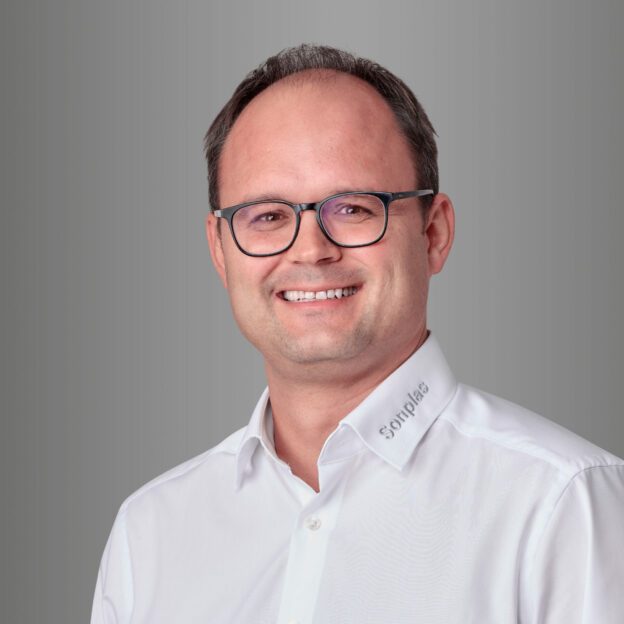
Dipl.- Ing. (FH)
Sales
+49 9421 9275-354
info@sonplas.de
Our products in action
Our References & Solutions
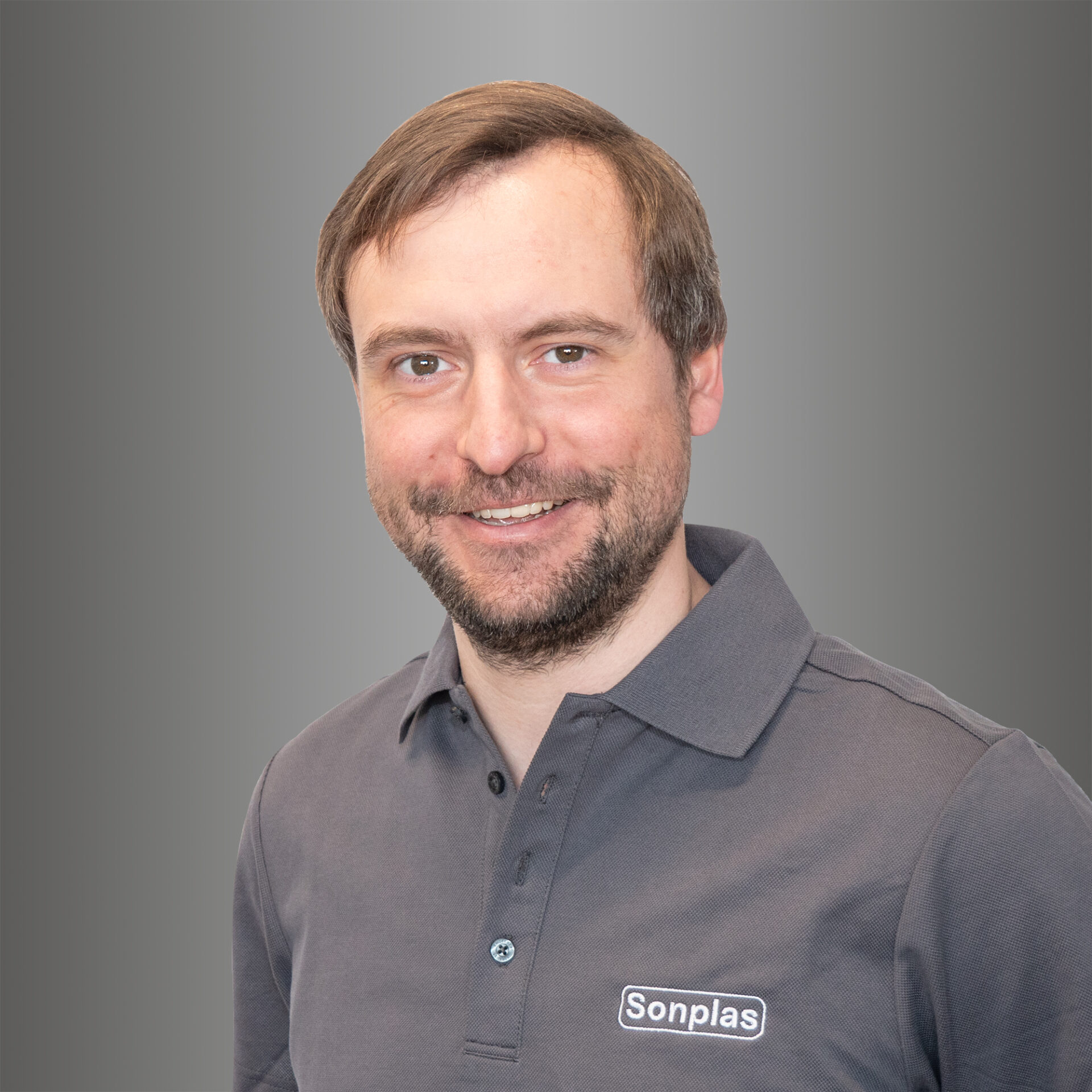
Alexander Denk
Team leader electrical design at Sonplas
Safely testing power electronics in electric cars – how is it done, Mr. Denk?
Power electronics in electric and hybrid vehicles are continually being improved. To remain competitive at this high level, manufacturers need systems capable of not only assembling individual components (inverters, chargers and DC/DC converters) but also testing them. Mr. Denk [Head of the Electrical Design Engineering Team] at Sonplas explains how this works best in practice and what makes Sonplas the perfect partner.
Mr. Denk, what does “power electronics” refer to in the context of electric vehicles?
Alexander Denk: The power electronics control the entire drive of the electric car. They comprise three components – the first is the inverter. It takes the direct current from the battery and converts it into alternating current for the motor. The second component is the AC charger or “charging unit”. During “fill-up”, alternating current flows from the power outlet or wall box through this component, which converts it into direct current in order to charge the battery. Then there is also the DC/DC converter, which powers the 12 V vehicle electrical system, for example.
What challenges are involved in power electronics for electric vehicles for manufacturers, original equipment manufacturers (OEM) and first-tier suppliers?
Alexander Denk: These components are highly complex assemblies. Power electronics are one of the keys to successful energy transition in the automotive industry. The innovation cycles in this area are getting shorter and shorter. This is increasing efficiency and simultaneously reducing power losses. Businesses need to be able to adapt to these changes. This can be quite a challenge, however, since they generally don’t have time to keep up with this rapid progess. Add to this the shortage of specialised workers. So they often lack the necessary expertise in order to bring new developments to success.
What advice do you have for decision-makers at manufacturing companies, original equipment manufacturers (OEM) and first-tier suppliers in the sector of power electronics for electric vehicles?
Alexander Denk: Work with Sonplas, of course (laughs). But seriously, we provide assembly and testing systems for precisely this area. For instance, we plan and implement line concepts from prototype construction to high-capacity systems with cycle times between 20 and 300 seconds for inverters, converters and on-board chargers. Users can manufacture typical workpieces weighing from 2 to 25 kilograms.
So ready-made systems for manufacturing power electronics for electric cars?
Alexander Denk: It depends. Based on the project requirements, our experts either choose solutions from our wide portfolio of proven processes, many of which are patented. Or else they work with you to jointly develop processes as a custom-designed solution. That lets you significantly lower your production costs. At our in-house laboratory, for example, we also use our extensive experience in electronics manufacturing to develop and manufacture power amplifiers. And of course we also assist with prototype construction if the company does not have the necessary equipment to produce them in-house.
And then, they can test components for the power electronics of electric vehicles?
Alexander Denk: Exactly. And this process needs to be precisely adapted to the specific requirements. For manufacturers, however, this often takes an enormous amount of time and effort. Meanwhile, most suppliers of assembly systems do not offer testing. Either, they lack the expertise or they don’t have the necessary equipment to handle all the required testing. In a short span of time, we’ve acquired extensive know-how and have a number of very successful references to show for it. Customers trust our specialists and rely on their experience, their comprehensive guidance and assessments. This gives them a clear advantage. Because we provide users with a tremendous degree of security in the often risky and uncertain development stages of a project.
What kind of tests does Sonplas offer for the power electronics of electric vehicles?
Alexander Denk: One key area is our test systems for the end-of-line sector (EOL). What is special about these systems is their modular design, which allows us to configure them flexibly to meet individual requirements. Our experts do this by selecting and combining specific modules based on the application and what needs to be tested. For different product types, the customer gets a basic machine with the appropriate test adaptor, which translates to major cost savings.
What aspects of the power electronics can I test with the individual modules?
Alexander Denk: Depending on what you need, the machine can check things such as leak-tightness. This is typically done with compressed air. Or it can perform “flashing” to store calibration data or load the operating system. The test station also allows customers to test communication via CAN, Ethernet, etc. Finally, customers can measure and calculate current, power or efficiency as well as indirectly detect rotational speed.
EOL test systems for power electronics in electric vehicles are one sector. What other areas does Sonplas cover in its portfolio?
Alexander Denk: We also offer manufacturers reliable solutions for safe-launch tests, as well as cold and hot testing of PCBs or entire assemblies. Because, in order for electric and hybrid vehicles to run very efficiently, not only the electric motor and the battery need to be within an optimal temperature range, but so do the power electronics. Our systems enable operating companies to perform tests at between minus 40 degrees and plus 90 degrees Celsius. They are also equipped to simulate various ambient conditions. It is also possible to perform long-term tests ahead of scheduled series production. This involves even more intensive product testing.
Isn’t testing power electronics dangerous?
Alexander Denk : That depends on the test system and the user. Electric cars have two vehicle electrical systems – the high-voltage system for the powertrain and the low voltage system for on-board electronics like radio, lighting, windscreen wipers or cruise control. The vehicles are designed with a built-in high voltage rechargeable battery which uses a converter to energize the 12 V battery for the on-board electronics. This voltage has gradually increased over time. It started out at just 48 V, and nowadays it’s 800 V. Soon, we might even be looking at 1200 V. Because the current is staying the same, but the cars need more and more power. Test systems need to be able to safely handle these increasingly high voltages. Many tests are performed directly on live components of the power electronics. After testing, we need to ensure that the test items are no longer live when the worker opens the safety door. Otherwise, his life could be at risk.
What does Sonplas do in order to minimise the risks of using their power electronics testing systems?
Alexander Denk: We offer a concept that covers potential accident causes and minimises risks. It starts from the selection of suitable installation materials such as cabling, terminals and other components and materials. Our systems are able to handle peak currents of over 800 amperes and accordingly high wattages just as safely as all other voltage ranges.
What would you say makes Sonplas superior in the power electronics sector?
Alexander Denk: We are a single-source supplier for assembly and testing. And these two aspects are efficiently combined in our solutions. Thanks to our proven network of carefully selected and reliable partners, we’re able to provide users with a complete package, all from a single source. This shortens distances, reduces organisational labour and prevents interfacing problems. Of course, we also train our customers on our systems. Plus, thanks to their modular design, we’re able to adapt our test benches to accomodate rising standards or product modifications.
